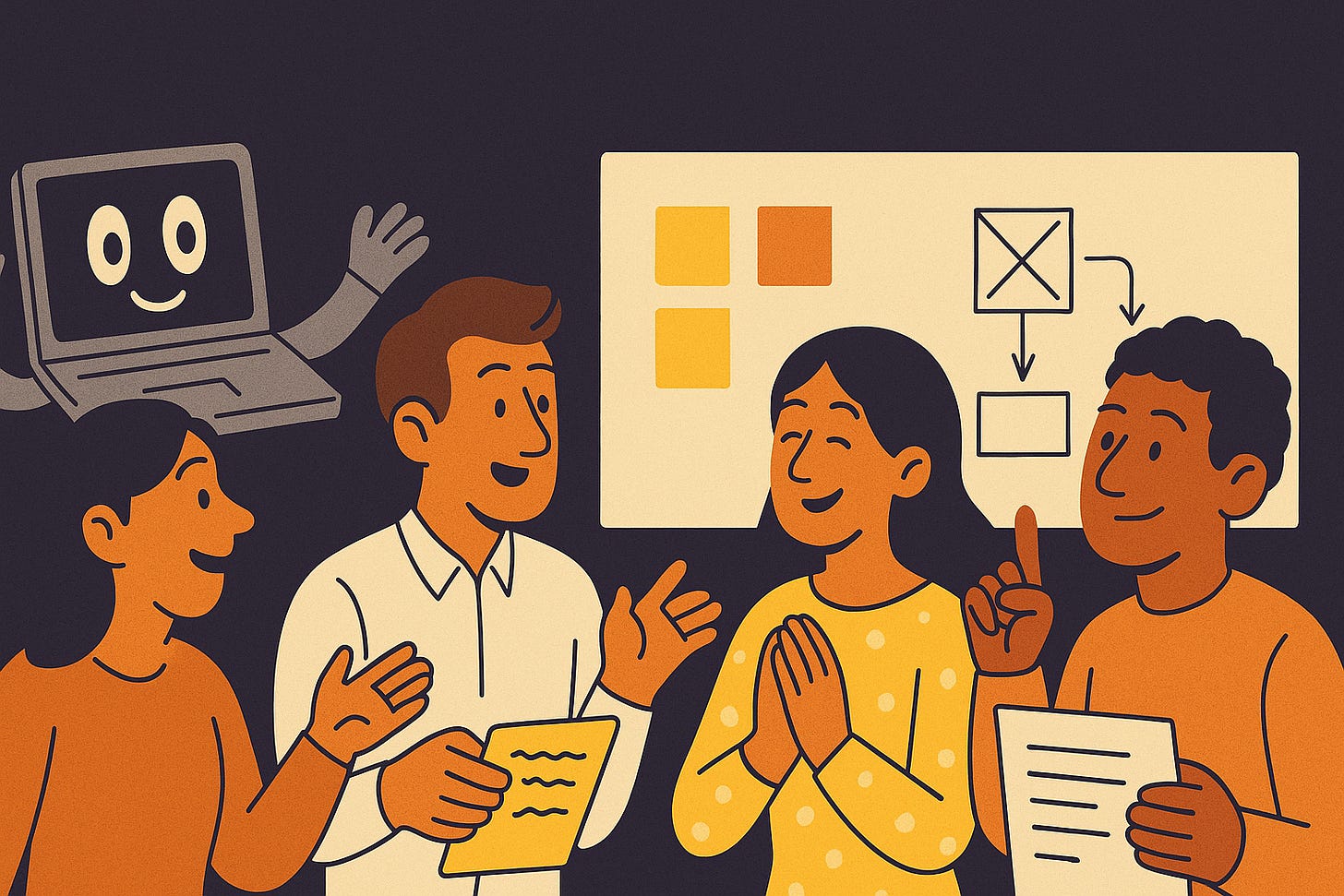Facilitation: Your Future Design & Innovation Superpower
Hey everyone 👋
Imagine this for a second: you roll out of bed, open Figma, and before you even take that first glorious sip of coffee, your AI co-pilot has already whipped up wireframes, user flows, and even a half-decent color palette. It's like having a design intern in your machine.
Wild, right? 🤯
And honestly, that future isn't far away. I’d argue it’s already here. According to a recent survey by 99designs, over 52% of designers already use generative AI tools for things like idea generation, copywriting, and rendering basic concepts. AI is only going to get better at automating routine design tasks, freeing us up for higher-value work.
But here's the thing. As AI gets better and better at making the things – the screens, the flows, the pixel-perfect buttons that whisper "BUY NOW" with just the right emotional manipulation – there's one part of design it's still going to be terrible at:
Actually working with real people.
🎷 Yep. Humans. We're like a jazz band: improvising, riffing, sometimes completely out of sync. AI can build your UI, but it can't conduct the orchestra of designers, engineers, marketers, and that one stakeholder who goes off on twenty-minute tangents.
Why? Because AI struggles with human nuance, empathy, reading group dynamics, and facilitating collaboration. It can't sense when the energy in the room is dropping and it's time for a stretch break. It can't read someone's face and notice they're holding back a brilliant idea. It can't create a safe space where people feel brave enough to share their weird, half-formed, potentially genius thoughts.
That's you. That's your job. 💪
🛠️ Design is changing. AI is making the how easier than ever. But the what and the why – deciding what problems to solve, aligning people around solutions, building trust and buy-in – that's not going away. In fact, it's becoming the most important skill in your toolbox.
📚 Research backs this up. Leadership development workshops have been shown to improve team communication, shared decision-making, and overall outcomes. Design facilitation helps teams clarify goals, identify needs, and make effective decisions, giving organizations a competitive advantage.
Because let's be honest: The future doesn't need more designers who only push pixels. It needs designers who can push thinking forward. 🤔
It needs designers who know how to run a great workshop. If you can help a team get unstuck faster than AI can generate its next "magical" suggestion, workshops aren't just meetings with sticky notes; they're structured human-to-human spaces that unlock collective intelligence and get everyone going in the same direction.
It also needs designers who are great at leading generative interviews. You'll uncover insights AI could never dream of, because you're listening between the lines, to hesitations, emotions, and context. The more we as a species get sucked into our technology, the more we’re going to need other humans to pull us out by listening to us when we need it most.
🔦 If you can bring people together to create clarity, you become indispensable. We need designers not just designing the product, but designers who are creating the process and system in which the product lives.
AI might soon build the UI. Heck, it might even decide the placement of every CTA button based on millions of data points while you're out grabbing tacos 🌮. But it won't build trust. It won't build alignment. It won't build understanding between humans.
That's on us.
✅ So, as you think about your growth as designers or innovators, remember:
Learn how to facilitate workshops.
Practice asking great questions in interviews.
Get comfortable leading groups toward clarity and decisions.
Because in the age of AI, your ability to create human connection is your ultimate competitive advantage
.

